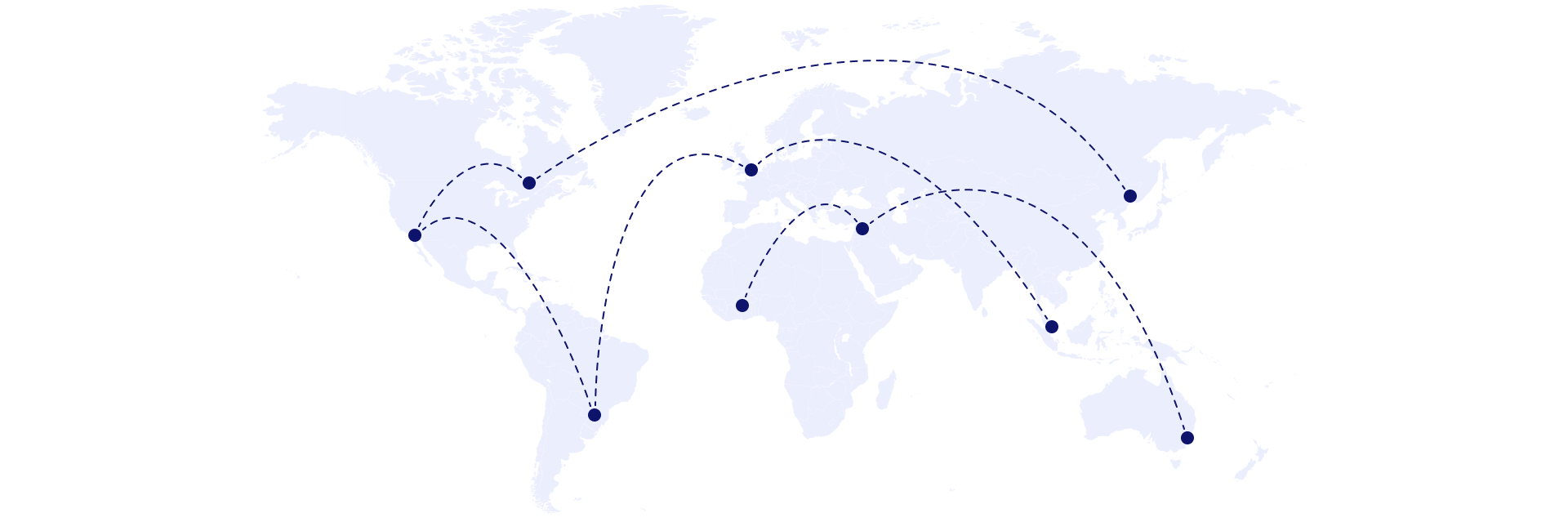
Fast international transfers aren’t usually cheap, and cheap international transfers aren’t usually fast.
To build strong supplier relationships, you need to place your trust in reliable payment technology. However, international transactions can take time to process since currency markets are in constant flux. If you time your exchanges right, you can maximise your profits when currency rates are cheaper — but it can be hard to know when to press the ‘go’ button.
In this article, we’ll break down the factors affecting international transfer speeds so you can plan your transactions and budget more accurately.
What factors affect the speed of international transfers?
The currency you’re using
International currency markets work similarly to the stock market: traders and large financial institutions buy and sell currencies, resulting in millions of international transactions. Most currencies operate on a floating exchange rate, so the price fluctuates according to the laws of supply and demand.
Very broadly, international transfer speeds can sometimes change as a result, too. If the price of a currency is falling and there is more of it on the market, transfer speeds can be faster. Equally, if the price is rising (or is expected to rise) and the currency is scarce, transaction speeds can slow down.
However, the more important factor is the specific currency pair you’re exchanging. US dollars feature as either the base or quote currency in over 70% of all international transactions, and USD to EUR is the most common transaction type.
If you’re authorising international transfers between two less popular currencies, transactions can sometimes take longer simply because the market is smaller.
The size of the transaction
Larger transactions can take longer to complete as you need to buy more of a given currency, and multiple currency batches may have to be arranged to facilitate the full amount.
The most significant limiting factors are the checks and fraud analyses that platforms and banks perform when they encounter transactions. Sums of all sizes can attract fraud analyses, but larger sums are scrutinised more heavily given their importance.
Pay like a local
- Pay suppliers, partners and staff in 40 currencies
- Send up to 200 payments in a single transaction to save time and money
- Open up to 10 local currency accounts, with local account numbers
- Lock in conversion rates to manage your currency risk
The parties involved in the transfer
Banks use the Society for Worldwide Interbank Financial Telecommunication (SWIFT) system to send payments to overseas banks, exchanging information about payments and other transactions. There are more than 11,000 SWIFT members, and so the network for some international transactions may be longer than others.
For example, international transfers travelling further afield may take longer than ones between neighbouring countries. At each point, the bank will take some time to process and schedule the international transaction, delaying the process by degrees.
Administrative hurdles
We’ve already touched on fraud and processing administration involved in international transfers, but there is a final step. Even when your international transfer is completed, there can still be a delay in the sum appearing in your bank account.
These days, banks will show the transaction as “pending” in your account, but that doesn’t necessarily mean the funds are usable, so in some ways, it’s not yet arrived in the account.
How long do international transfers take to go through?
Amid all these factors, international transactions can take up to five days to complete. However, payments can sometimes be lost entirely due to poor security or sudden downtimes in platform technologies, making steep convenience fees somewhat ironic.
How can I speed up my international transfers?
Businesses stand to gain by working with an expert currency partner like WorldFirst, which offers same-day and next-day payments on major currencies, as long as cut-off times are met. Bear in mind that Australia and New Zealand are finishing the day when countries on the other side of the world are just starting.
Major currencies such as GBP, USD and EUR are usually transferred within the same day, while currencies like RMB can take longer and exotic currencies such as AED, PHP, MYR may take several days.

The WorldFirst Team
Disclaimer: These comments are the views and opinions of the author and should not be construed as advice. You should act using your own information and judgement. Whilst information has been obtained from and is based upon multiple sources the author believes to be reliable, we do not guarantee its accuracy and it may be incomplete or condensed. All opinions and estimates constitute the author’s own judgement as of the date of the briefing and are subject to change without notice. Please consider FX derivatives are high risk, provide volatile returns and do not guarantee profits.
You might also like
Choose a category below for more business, finance and foreign exchange support from WorldFirst.
Businesses trust WorldFirst
- Almost 1,000,000 businesses have sent $150B around the world with WorldFirst and its partner brands since 2004
- Your money is safeguarded with leading financial institutions



